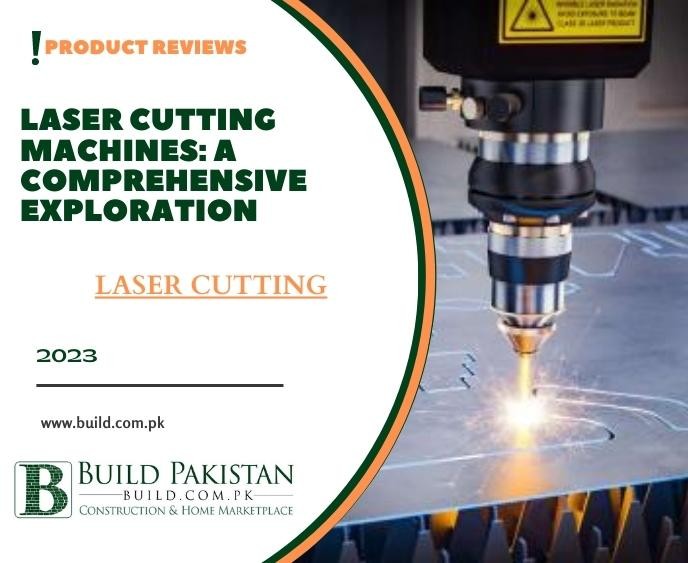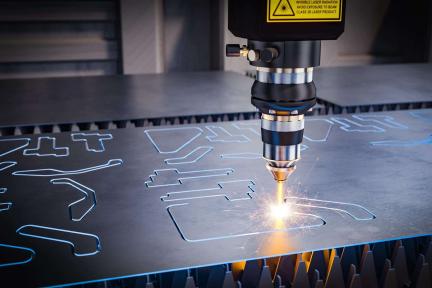Laser Cutting Machines: A Comprehensive Exploration

Introduction:
In the era of cutting-edge technology and
manufacturing excellence, laser cutting machines have emerged as the vanguard
of precision and versatility. These remarkable devices harness the power of
focused light beams to sculpt and shape materials with unmatched accuracy and
intricacy. This comprehensive guide delves into the world of laser cutting
machines, revealing their intricate workings, diverse a pplications, manifold
benefits, potential drawbacks, market availability, and the profound impact
they wield across various industries.
Understanding Laser Cutting Machines:
Mastering Precision
with Light: Laser cutting machines stand as a testament to human I ngenuity,
transforming the mundane act of cutting into an art form driven by light. These
machines utilize laser beams to slice through materials with micron-level
precision, ushering in a new era of manufacturing and design.

Decoding the Technology
Laser Source:
At the heart of every laser cutting machine is
the laser source. This powerhouse emits a high-energy beam of light that is
focused onto the material's surface, inducing controlled heating and
vaporization.
Optical Components:
Precision mirrors and lenses play a
pivotal role in guiding and focusing the laser beam with utmost accuracy onto
the material, ensuring intricate cuts and designs.
Control System:
The controller acts as the brain of the
machine, orchestrating movements and power modulation based on digital designs,
ensuring the desired cutting outcome.
Benefits of Laser Cutting Machines
Microscopic Precision:
The defining feature of laser cutting
machines is their unparalleled precision, enabling the creation of intricate
patterns and designs that once seemed unattainable.
Materials Melting Pot:
Versatility is a hallmark of laser
cutting. These machines can handle a diverse range of materials, spanning
metals, plastics, textiles, wood, and beyond, making them indispensable across
industries.
Clean and Polished Cuts:
The inherent accuracy of laser
cutting results in minimal material wastage and leaves behind clean edges,
often eliminating the need for additional finishing processes.
Accelerated Production:
The pinpoint accuracy of laser
cutting minimizes the need for rework, reducing production time and enhancing
overall efficiency.
Navigating Drawbacks
Material Compatibility:
While laser cutting demonstrates
remarkable versatility, certain materials, such as reflective metals, can pose
challenges due to their interaction with the laser beam.
Initial Investment:
The upfront cost of acquiring a laser
cutting machine can be substantial, neces sitating a careful evaluation of the
potential return on investment, taking into account usage frequency and
business needs.
Applications Across Industries
Manufacturing Precision:
In industries ranging from
automotive to electronics, laser cutting machines fabricate intricate parts and
components with precision and consistency.
Textile and Fashion Artistry:
The world of textiles and
fashion embraces laser cutting for creating intricate patterns and designs on
fabrics, adding a touch of uniqueness to garments.
Artistic Innovation:
Artists and designers harness the power
of laser cutting to bring their visions to life, crafting sculptures, intricate
signage, and architectural models that redefine creative expression.
Market Availability and Investment:
Exploring Your Options:
Laser cutting machines are available from various manufacturers, each offering
a spectrum of models catering to different scales of operation. The market
presents an array of choices, varying in features, power capacities, and
capabilities, accommodating diverse budgets and specific requirements.
Making an Informed Decision
Material Variety:
Evaluate the scope of materials you intend
to work with and select a laser cutting machine that can accommodate your
materials of choice with precision.
Cutting Area and Power:
Consider the scale of your projects
and the requisite cutting power to ensure seamless execution and optimal efficiency.
Conclusion:
Where Precision Meets Imagination - The Promise of Laser Cutting: As technology continues to push the boundaries of precision and innovation, laser cutting machines stand as pioneers of transformation. They bridge the gap between science and art, redefining the ways we manufacture, design, and create. In a world where precision is paramount, laser cutting machines carve a path towards a future where boundaries of imagination and possibility are continuously expanded.









